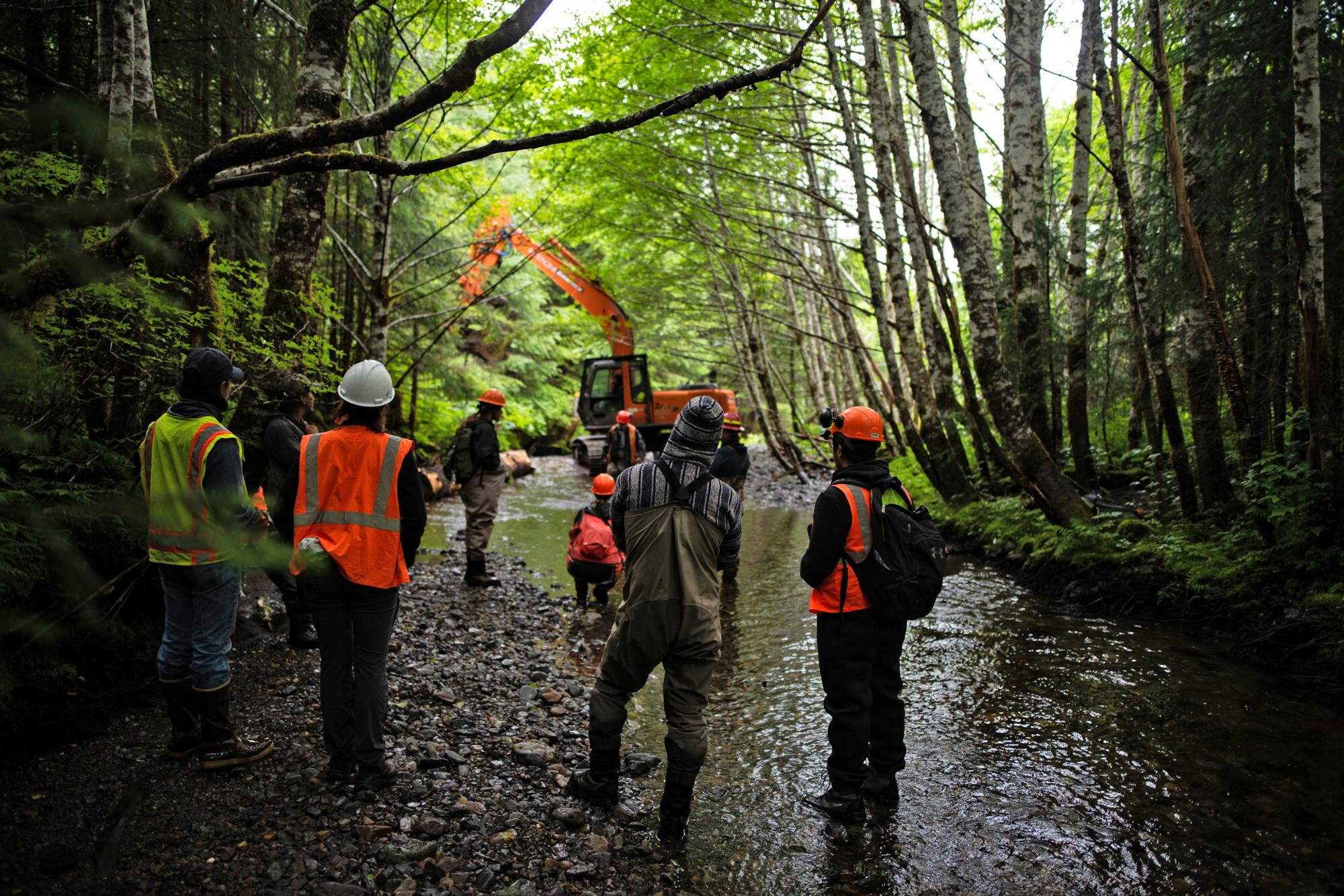Any and all public suggestions for sustainably managing the Tongass National Forest are being sought in a series of online and in-person meetings throughout Southeast Alaska by the U.S. Forest Service during the next 10 weeks.
“Instead of commenting on a plan we present, we’re asking folks to help develop it,” an announcement by the USFS about the meetings states.
That means accepting input from stakeholders including individuals, groups, government agencies, or Alaska Native tribes about ideas such as “wood products, clean water, river restoration, fishing, jobs, improved wildlife habitat, healthy watersheds and /or new industries.”
Suggestions can be submitted online through the USFS’ Southeast Sustainable Strategy website, with the meetings in the coming weeks intended to provide an overview of the project’s intent and answer questions. A webinar for tribal entities was scheduled from 6-7 p.m. Monday and a second webinar for all members of the public is scheduled from 6-7 p.m. Wednesday.
An in-person workshop in Juneau is scheduled from 4-7 p.m. May 3 at the USFS’ Juneau District Office at 8510 Mendenhall Loop Road.
It’s another step in the agency’s Southeast Alaska Sustainability Strategy that was launched in 2021 and is linked with actions such as $25 million in federal grants awarded last fall for 70 area projects and the Biden administration’s reinstating of the Tongass Roadless Rule at the beginning of this year.
[Biden administration reinstates Tongass Roadless Rule]
Paul Robbins, a regional forest service spokesperson, said Monday much of the work so far has involved assessments and developing a management structure. He said the focus of this spring’s public input process is developing the long-term strategy.
“This is about how the Forest Service will actually manage the Tongass National Forest as a public-use forest over the next 10 years,” he said.
While meetings have so far been scheduled through late May, Robbins said the public will be able to contribute ideas at least through the end of June. He said the timeline could be extended to ensure they have contacted all tribes in the region, which is required by law, along with active efforts to reach out to other entities.
“We’re physically going to most communities in Southeast over a full 45-day process,” he said.
The USFS plans to offer an interactive story map to pinpoint locations with an assessment tool to assist in demonstrating the projects’ level of integration, the latter of which will developed based on the public feedback period, according to the agency’s website. The assessment tool will be used to prioritize work for the next 10 years.
• Contact Mark Sabbatini at mark.sabbatini@juneauempire.com

